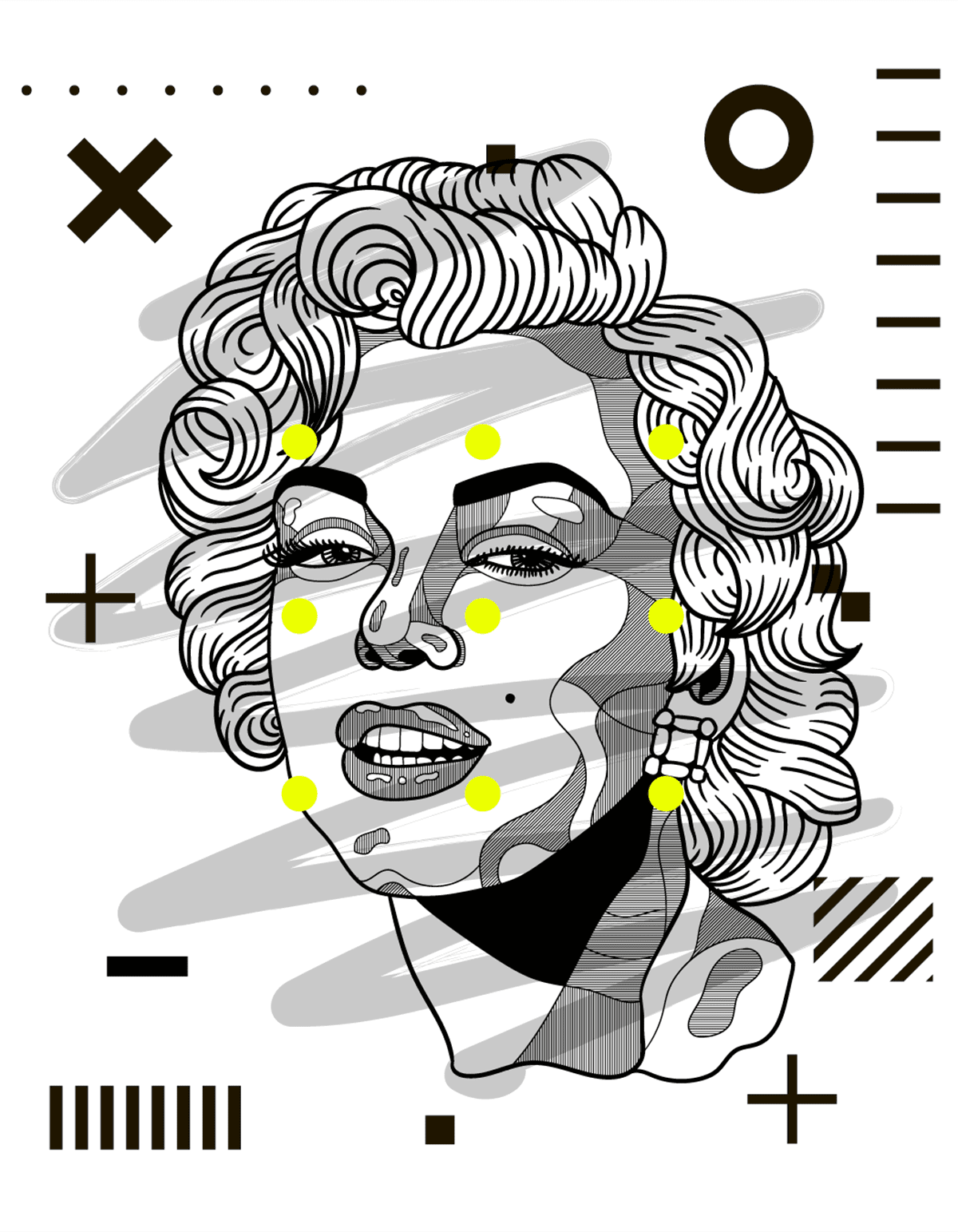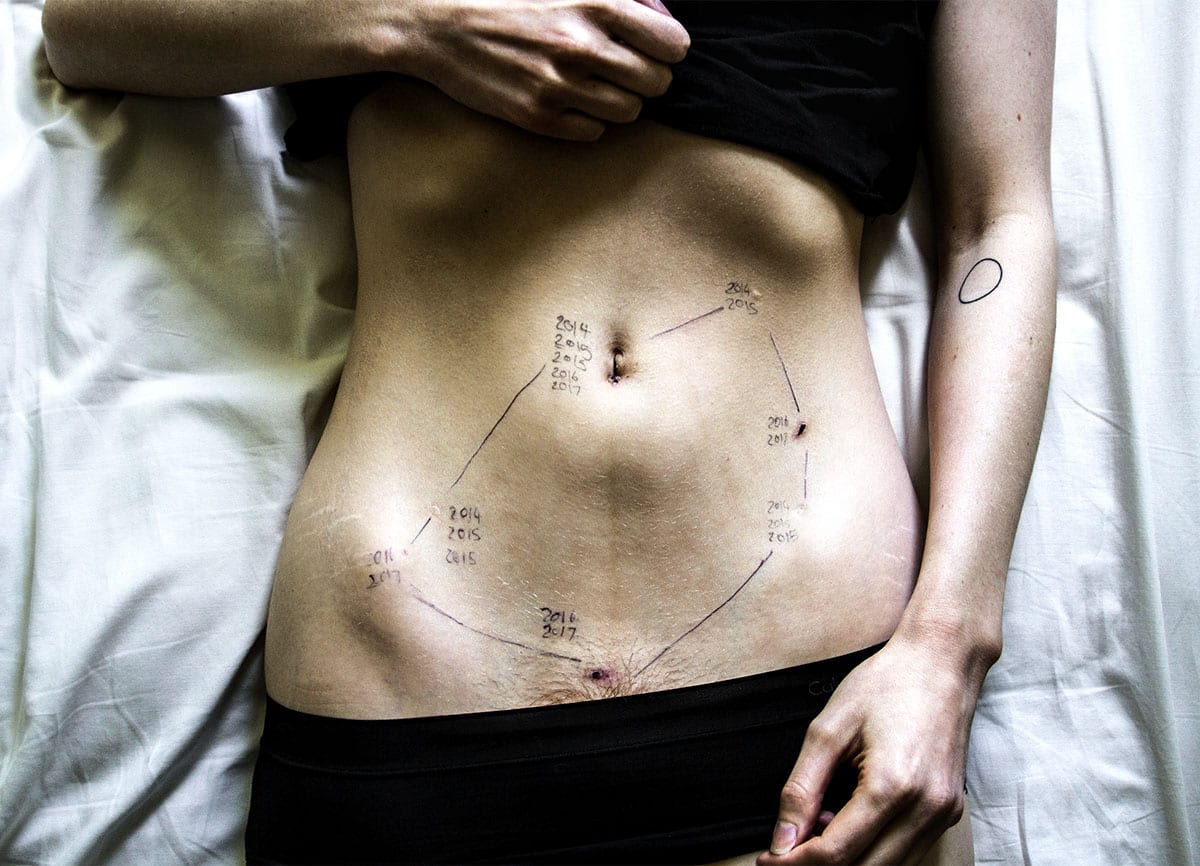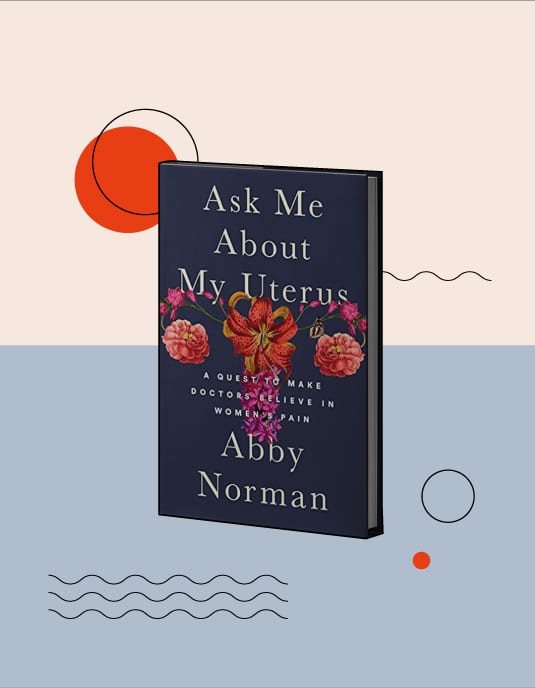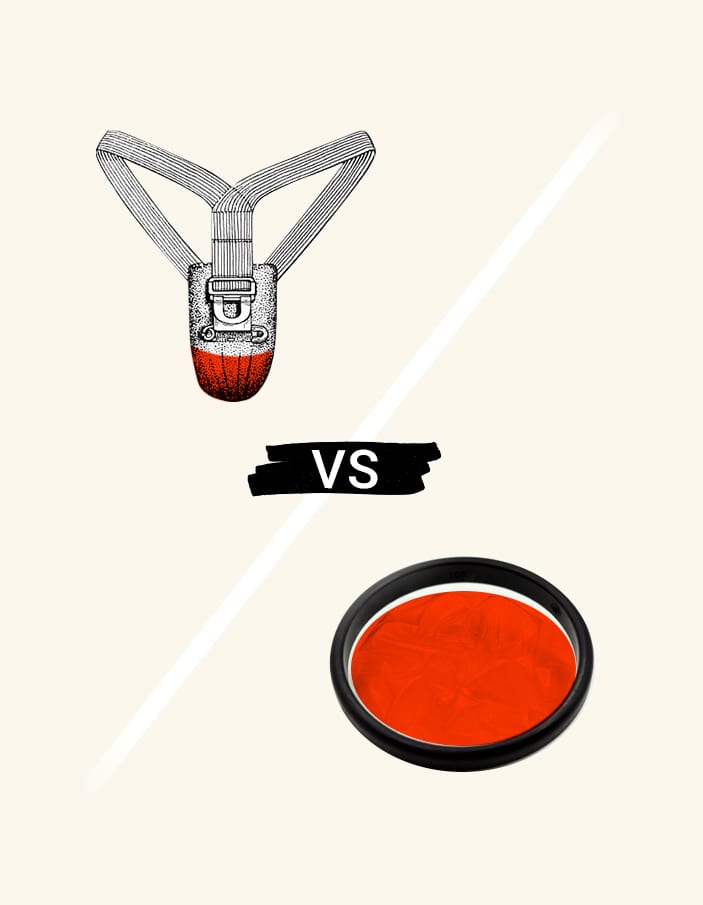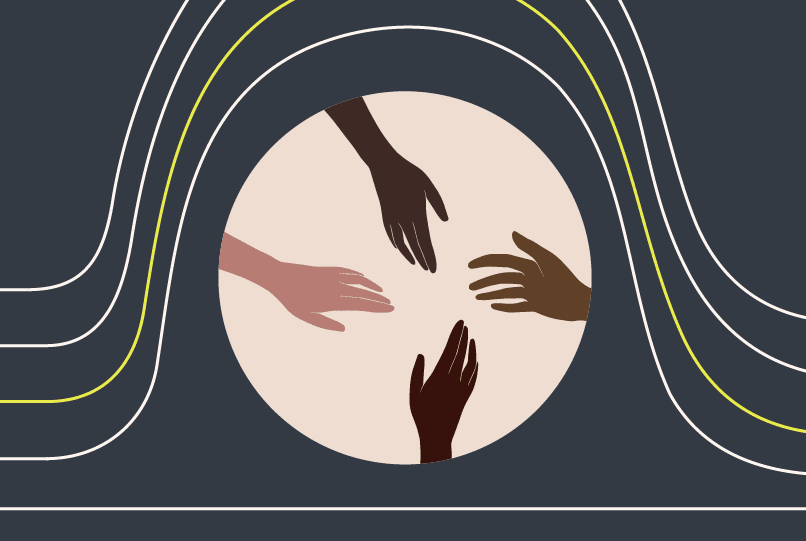Marilyn Monroe’s silent battle with endometriosis
How endometriosis changed Marilyn’s life
TL/DR: Actress and sex icon Marilyn Monroe struggled silently with endometriosis throughout her whole life. The unbearable pain she experienced during her period led to infertility, a fragile mental state, and an unhealthy dependence on barbiturates.
Marilyn Monroe’s iconic blonde hair, sultry voice, and luscious curves graced the silver screen for decades. After starring in 1950s classic films like Gentlemen Prefer Blondes and How to Marry a Millionaire, Marilyn’s star power was undeniable. The sex icon quickly rose to global fame. Men wanted to be with her, and women wanted to be her.
Her highly-publicized marriages with baseball player Joe DiMaggio and playwright Arthur Miller — plus, a rumored tryst with President John F. Kennedy — rival modern-day celebrity scandals.1 Step aside, Kim Kardashian West: Marilyn, while no longer living, still holds the title for America’s most iconic pop culture starlet. She was also the most photographed woman of the twentieth century.2
But what most people don’t talk about is Marilyn’s silent battle with endometriosis. Her close friends observed that she experienced howling pains during her period, which she attempted to quell with sedatives like barbiturates. Sadly, her condition was brushed aside by doctors: despite years of agonizing (and questionable) “psychotherapy,” Marilyn never received the support or treatment she so desperately needed.
Marilyn’s story mirrors that of many individuals diagnosed with endometriosis today. Endo is a common condition, estimated to affect one in ten individuals assigned female at birth.3 Yet it’s frequently misdiagnosed. And even with today’s advanced healthcare and medical technology, we don’t yet have a cure – nor do we fully understand what causes the painful condition.
What does this mean? First and foremost, that ongoing endometriosis research, awareness, and advocacy is critical. To learn more about what it’s like living with endometriosis and how to support those suffering from this chronic condition, take a look at our Resources section at the end of this post.
Here’s a closer look at Marilyn Monroe’s little-known struggle with endometriosis and the impact it left on her legacy.
What an endometriosis diagnosis means
Before we dive into Marilyn’s story, let’s take a moment to recall what endometriosis actually is.
Endometriosis is an often painful disorder that occurs when endometrial-like tissue — the tissue that lines the inside of your uterus — appears in different places in the body outside the uterus (like the ovaries, fallopian tubes, and within the pelvis).3
Diagnostic tools for endometriosis range from an initial pelvic exam to ultrasound, MRI, or even laparoscopy – a surgical procedure that allows your provider to see firsthand what’s going on within your abdomen. In each of these procedures, doctors look for evidence of endometrial-like tissue growing outside the uterus.4
Keep in mind that none of these diagnostic approaches are 100% reliable. Endometriosis is underdiagnosed – and frequently misdiagnosed – due to its symptoms which vary widely in both nature and severity from one patient to another.
Some symptoms of endometriosis include:5
- Painful periods (aka dysmenorrhea)
- Heavy bleeding that causes you to change your preferred period products every two hours or less
- Painful intercourse (aka dyspareunia)
- Abdominal or pelvic pain
- Pain with urination or bowel movements
- Infertility
- Increased fatigue, constipation, bloating, and/or nausea around your period
Individuals diagnosed with endometriosis may not experience all of these symptoms, or they may experience additional symptoms that are not on this list. If you are experiencing excessively heavy periods, chronic abdominal or pelvic pain, or pain during sex, make sure to speak with your healthcare provider.
A life of many traumas: Marilyn Monroe’s complex relationship with pain
Marilyn Monroe was born on June 1, 1926, in Los Angeles, California. Her legal name was Norma Jeane Mortenson; she was later baptized under the name Norma Jeane Baker.
Marilyn had no easy childhood: Before her rise to Hollywood fame, she spent much of her formative years in foster care, including two years orphanage. Her mother and both maternal grandparents had been committed to mental institutions; Marilyn never knew her father. Throughout young adulthood, she lived in fear of being similarly diagnosed as “insane” or mentally unstable. It’s likely that this fear and paranoia exacerbated her chronic physical pain.
It’s not entirely clear when Marilyn first received a diagnosis of endometriosis. She didn’t speak about her condition publicly; only after her passing, when letters and journal entries were eventually published and her life story discussed in several books, was her battle with endometriosis fully revealed.
In an article published in the Journal of Human Reproductive Sciences, Dr. Ian Fraser notes, “One of the most famous sufferers from endometriosis was Marilyn Monroe. The condition was so severe that it destroyed her marriages, her wish for children, her career, and ultimately her life. In days before effective conservative surgery or effective medical therapies, it led to progressively increasing use of strong analgesics, tranquilisers and hypnotics – and drug dependency.”3
Dr. Fraser goes on to explain some of the potential factors that appear to play important roles in determining whether an individual will develop endometriosis. They include “reproductive lifestyle, especially a delay in child-bearing, poorly understood immunological factors, some environmental factors, probably including exposure to a range of environmental toxins, and reproductive tract occlusion, such as an imperforate hymen.”3
It’s possible that the first three out of these four risk factors were relevant to Marilyn’s endometriosis, though we have too little clinical information to make a definitive claim. Also, keep in mind that the etiology of endometriosis is still up for debate among the medical community.
Marilyn was married three times during her lifetime: First, to James Dougherty at age 16 in 1942, then to baseball legend Joe DiMaggio in 1954, and finally to playwright Arthur Miller in 1956. Throughout each of these marriages, she longed to be a mother and talked constantly about having a child — a son, specifically. Sadly, she struggled to carry out a healthy pregnancy: Marilyn suffered multiple miscarriages, each of which made her mental state even more fragile.
Whether or not she knew what was causing it, we can speculate that Marilyn’s endometriosis pain started at a young age. As Anthony Summers writes in his book Goddess: The Secret Lives of Marilyn Monroe,
“First husband Dougherty said, ‘Norma Jeane had so much trouble during her menstrual periods, the pain would just about knock her out.’ Sometimes, in her earliest starlet days, period pain would cause Marilyn to stop her car with a screech of brakes, jump out, and crouch on the ground in agony. Maurice Zolotow, her early biographer, once penetrated her studio dressing room and noted no less than fourteen boxes of pills. Almost all were painkillers prescribed for menstrual cramps.”6
Some believe that Marilyn’s endometriosis – and overall physical pain – became worse as a result of multiple unsafe abortions. During Marilyn’s lifetime, abortions were illegal, so there are no official records of whether or not she had one. However, a source quoted in Summers’ book, Amy Greene, claimed that “Marilyn made the horrendous admission that she had had twelve abortions, some of them back-street butcheries dating back to her earliest days in Hollywood.”6
One of Marilyn’s earliest rumored abortions was said to have taken place in 1947, after a brief affair with actor Charlie Chaplin’s son, also named Charlie.
Marilyns’ close friends shared that the actress was an avid reader, often jumping from topic to topic, blasting records all hours of the night while reading. Source Amy Greene (again quoted in Goddess) said that these long nights of loud music and endless reading were a cover for Marilyn’s battle with insomnia and chronic pain, directly related to endometriosis.6
How did she cope? Since very little was known insofar as clinical treatments for endometriosis at the time, Marilyn self-medicated with barbiturates – a group of drugs that have a tranquilizing effect on the body.
The physical effects of barbiturates range from mild relaxation to an inability to feel pain and loss of consciousness. They’re known to be addictive and, today, are only prescribed in rare circumstances due to the risk of fatal overdose. Yet back in the 1950s, barbiturates were widespread, often prescribed to treat insomnia and soothe “nervous dispositions” in housewives.
Somehow, Marilyn managed to continue filming movies even in the midst of her growing drug dependence and chronic pain. She also never gave up on her dreams of having children and, notably, refused a hysterectomy that was recommended by her longtime physician, Dr. Lee Diegel, following her endometriosis diagnosis.
Marilyn remained fearful of medical professionals throughout her life – especially gynecologists. Much of this was probably the result of early trauma related to sexual abuse, along with the emotional and physical suffering that came along with her multiple miscarriages and reported abortions.
On April 28th, 1952, medical staff at the Cedars of Lebanon hospital in Los Angeles wheeled an extremely nervous Marilyn Monroe into the operating room for a surgery where she was to have her appendix removed. When the team of physicians went to begin the procedure, they found a letter she had taped to her abdomen: It was addressed to her surgeon, Dr. Marcus Rabwin. The letter read,
“Dear Doctor, Cut as little as possible I know it seems vain but that doesn’t really enter in to it. The fact I’m a woman is important and means much to me. Save please (I can’t ask enough) what you can – I’m in your hands. You have children and you must know what it means – please Dr Rabwin – I know somehow you will! Thank you – thank you – thank you – For God’s sakes Dear Doctor no ovaries removed – please again do whatever you can to prevent large scars.” 7
On August 5, 1962, Marilyn was found dead from an overdose of barbiturates in her home in Brentwood, California. She was 36 years old.1
Resources for brave endo warriors
Proper diagnosis and treatment of endometriosis can save lives. No one deserves to be in the kind of physical and emotional pain brought on by endometriosis. The first step in fighting for fair, equitable diagnosis and treatment is education: Do your part by learning more, speaking up, donating if you have the means to do so, and offering emotional support to anyone in your life struggling with endo.
Read more about endometriosis on The Fornix:
- Learn the basics of endometriosis, including symptoms, diagnosis, treatment, and endo’s impact on your period in our Guide to Endometriosis.
- Join the conversation on Racial Disparities in Endometriosis Diagnosis, especially pertaining to misdiagnosis among BIPOC communities.
- Read our interview with author Abby Norman on her book, Ask Me About My Uterus, and her personal battle against endo’s chronic and debilitating pain.
Some additional resources:
- The Endometriosis Research Center “strives to make a positive impact on behalf of all those affected by the disease.” They spread awareness about the most recent research and treatments, plus they connect people who experience endometriosis with one another for support.
- Endometriosis: The Inside Story is a documentary created by two women to show how misogyny in a medical context can result in the dismissal of women’s pain and inevitable misdiagnosis of endometriosis.
- Healthline’s Editorial Team curated a list of the 20 Best Endometriosis-specific Blogs. Each of these sites are filled with up-to-date information, resources, news, and first-person narratives written to help those battling endo feel less alone.
- Read Vagina Problems by Lara Parker, an authentic, unapologetic narrative that explores the persistent lack of respect for female pain in Western medicine.
This article is informational only and is not offered as medical advice, nor does it substitute for a consultation with your physician. If you have any gynecological/medical concerns or conditions, please consult your physician.
© 2021 The Flex Company. All Rights Reserved.
- History.com. (2009, November 13). Marilyn Monroe born. https://history.com/this-day-in-history/marilyn-monroe-born[↩][↩]
- Museo Salvatore Ferragamo. (2013). Marilyn Monroe and the power of her 4-inch stiletto heel. Google Arts & Culture. https://g.co/arts/aQRYG6yoJYvw2bLt7[↩]
- Fraser I. S. (2008). Recognising, understanding and managing endometriosis. Journal of Human Reproductive Sciences, 1(2), 56–64. https://doi.org/10.4103/0974-1208.44112[↩][↩][↩][↩]
- Mayo Clinic. (2019, October 16). Endometriosis – Diagnosis and treatment. https://mayoclinic.org/diseases-conditions/endometriosis/diagnosis-treatment/drc-20354661[↩]
- Mayo Clinic. (2019, October 16). Endometriosis – Symptoms and causes. https://mayoclinic.org/diseases-conditions/endometriosis/symptoms-causes/syc-20354656[↩]
- Summers, A. (2012). Goddess: The secret lives of Marilyn Monroe. Open Road Media.[↩][↩][↩]
- Banner, L. (2011). MM-personal: From the private archive of Marilyn Monroe. Harry N. Abrams.[↩]
